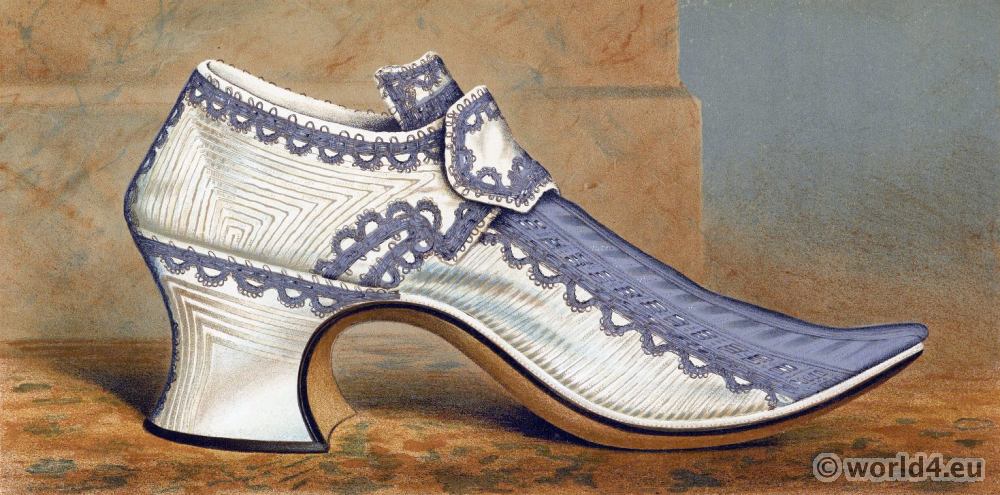
Poulaine of King John II. of France (Jean le Bon). 14th century.
Chaussure avec patin du Roi Jean (1340).
John II the Good (1319-1364) was Duke of Normandy from 1332 to 1350 and King of France from 1350 to 1364.
A Poulaine (beaked shoe) is a shoe made in a turn-stitched fashion with a conspicuously long toe. Another name for beaked shoes is poulaines. Beaked shoes are a fashion that spread primarily in England and France. Interestingly, their occurrence in Central Europe is limited, as the examples found so far show.Furthermore, this fashion was obviously more reserved for the upper classes of society, as the excavations at Baynard’s Castle in London have shown. Here, the royal wardrobe was not far away in the 14th century. This fact is also confirmed by countless depictions in the 14th and 15th centuries in which only the rich upper class wore such shoes.
Poulaines first became popular in the late 14th century – in the 1380s, perhaps as early as the 1370s – and were out of fashion by 1400. However, they became so popular again in the mid-15th century that dress codes were enacted to regulate their use and associated excesses.
In the course of time, not only the nobility, but all classes wore beaked shoes, which is why the length of the shoe toe was precisely regulated in dress codes and oriented to the social status of the wearer. This is where the expression “living large” comes from. Despite all the regulations, beaked shoes remained until the end of the 15th century, when they were replaced by duck bills and later by very blunt bear claws or ox mouths.
Source: Histoire des cordonniers : précédée de l’histoire de la chaussure depuis les temps les plus recules jusq’a nos jours. Paris : Sere, 1852. Author: P. L. Jacob, (1806-1884). History of shoemakers: preceded by the history of footwear from the earliest times to the present day.

Discover more from World4 Costume Culture History
Subscribe to get the latest posts sent to your email.






